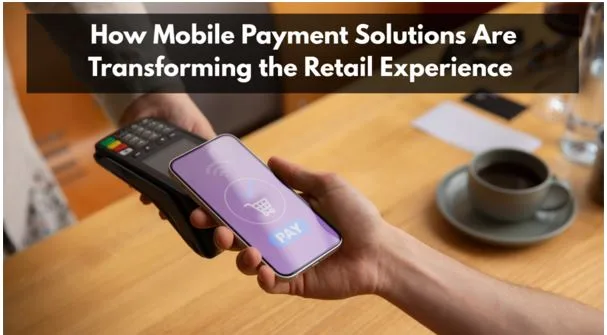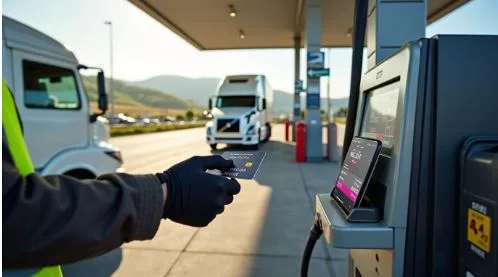How Mobile Payment Solutions Are Transforming the Retail Experience
Retail has entered a new era where digital innovation shapes every step of the customer journey, from product discovery to final purchase. Modern consumers demand speed, ease, and seamless experiences in both the physical and digital channels.
Mobile payments have become one of the most effective sources of change among the numerous technologies that redefine the shopping process. Mobile payment solutions have transformed customer payment and retailer operations through contactless checkouts, in-app purchases, and smartphone-based point-of-sale systems.
By eliminating the traditional barriers such as the long queues and limited payment options, it is replaced with quick, safe and convenient transactions, making them compatible with a modern lifestyle.
Not only are these innovations making consumer life easier, but they are also enabling retailers to enhance efficiency, loyalty, and derive meaningful insights into customer behavior.
The following are some major ways mobile payment innovations are redefining the retail experience and shaping the future of commerce.
1. Streamlining Checkout with Mobile Payment Solutions
The most visible transformation that mobile payment solutions are driving in retail is the checkout process. Old methods of cash or card payments are associated with waiting in line, typing in the information and the high risk of errors.
Mobile payments, in contrast, can be authorized instantly with only a tap, a scan or a biometric check. This not only shortens waiting time but also enhances the shopping experience, particularly in shops with high customer traffic.
For retailers, quick checkouts also imply that more customers can be served quickly, minimize waiting lines during the rush hours, and the operations will continue their normal flow.
2. Enhancing Customer Convenience and Flexibility
Contemporary consumers demand speed and convenience in all touchpoints. Mobile payment can fulfill this expectation by enabling customers to pay however and wherever they want, through digital wallets, QR codes, or in-app purchases.
Customer preferences, receipts, and loyalty points are also stored in one place, resulting in a seamless and frictionless experience.
Offering customers flexible payment options leads to higher conversion rates, fewer abandoned carts and omnichannel approaches for retailers, enabling seamless transitions between online and offline shopping.
3. Enabling Omnichannel Retail Experiences
In the modern world, customers move seamlessly between the online and offline options. They may browse products online, visit a store to test them, and make the purchase later through an app.
Mobile payment solution will combine these steps, as they connect payment credentials across all platforms and simplify the payment process. Such integration ensures that the same payment method can be used by customers online, in-store, or at self-service stalls, providing a consistent and easy channel.
The retailers gain the advantages of better customer retention, easier accounting and enhanced data insights.
4. Giving Employees the Tools to Serve Anywhere
The mobile point-of-sale (mPOS) systems are changing the way store associates and customers interact. Employees can process transactions anywhere on the sales floor using a tablet or smartphone, rather than standing in one place at a stationary checkout counter.
This mobility allows employees to help clients access real-time product details, inventory and close a sale immediately, making the service experience more personalized and efficient. It also helps retailers optimize store layouts, minimize bottlenecks, and present a modern and tech-forward image.
5. Strengthening Security and Reducing Fraud
The fundamental principle of any payment experience is security, and the mobile payment technology is designed with advanced protection. The characteristics of tokenization, encryption, and biometric authentication can guarantee that sensitive information is never revealed or stored in an insecure manner.
Due to the creation of a distinct digital token for every transaction, the likelihood of a data breach is reduced to a minimum level. Additionally, in-house fraud detection systems are based on real-time tracking and artificial intelligence that identify suspicious behavior and increase the level of protection to retailers and customers.
6. Personalize Retail with Real-Time Data
Any digital transaction generates valuable data, which can be used to predict customer preferences, purchasing behavior, and tastes. Mobile payment solutions provide retailers with access to extensive data that can be utilized in marketing, inventory management, and targeted offers.
Retailers can use purchase data to personalize offers and communications by connecting it with loyalty programs and digital receipts. Such customization not only enhances the interaction but also enables the establishment of stronger and enduring relationships between brands and shoppers.
7. Boosting Customer Loyalty and Engagement
Speed is not the only reason why mobile payments matter, as it also opens the door to greater loyalty. A significant number of mobile payment systems are directly linked to loyalty programs, offering discounts or rewards during the checkout process.
This eliminates the need for customers to carry physical cards or promo codes. Retailers can provide post-purchase follow-up, such as a digital thank-you note or a personalized offer, to encourage repeat buying.
With the combination of purchases and rewards, retailers create a seamless circle of convenience and value that encourages customers to revisit.
8. Supporting Contactless and Self-Service Retail
The trend towards contactless payments increased at an accelerated rate in recent years, driven by safety issues and the need to ensure at least minimal contact transactions.
Self-checkout stalls, vending machines, and retail spaces without employees are now operated by mobile payment solutions, enabling customers to make purchases without the need for an employee’s attention.
This not only saves labor costs and accelerates service but also promotes round-the-clock retail forms. Contactless technology has become a necessity and not a possibility, and mobile payments are the core of this change.
9. Overcoming Operational and Integration Challenges
Despite the benefits, introducing mobile payment systems can be a complex process. Retailers have to combine the new technologies with the old POS, CRM, and inventory systems. This requires proper planning, technical expertise, and investment in new infrastructure.
The current mobile payment providers, however, are addressing these disadvantages by simplifying APIs, transitioning to cloud-based platforms, and offering secure plug-and-play alternatives that can be adopted more easily.
Retailers can adopt scalable and compliant solutions to provide a smooth integration process without interfering with the day-to-day running of the stores.
10. Shaping the Future of Retail Payments
The retail future is becoming more mobile-first. The next generation of retail experiences is poised to be transformed by emerging innovations in biometric verification, wearable payments, and voice-activated purchases.
The checkout will also be customized using artificial intelligence and predictive analytics, providing customers with relevant products and offers in real-time. Moreover, account-to-account transfers and digital wallets are making reliance on traditional card networks less necessary, and merchants pay lower transaction fees.
These technologies are only going to blur the lines between online and offline retailing- creating a truly seamless and customer-centric retail ecosystem.
Bottomline
Mobile payment solutions have emerged as the driving force behind the current retail transformation. They automate the checkout process, making it more convenient, increasing security, and generating valuable insights that enable smarter business decisions.
You can improve not only by adopting mobile-first payment systems, but also by ensuring that retailers are well-positioned to achieve long-term growth in a more competitive environment.
It is not merely a payment revolution but a reinvention of the entire retail experience. Mobile technology has made the interaction between customers even more enjoyable, faster, and safer. From the moment they walk into the store to complete their transaction on the phone, the experience has become more interactive than ever.




